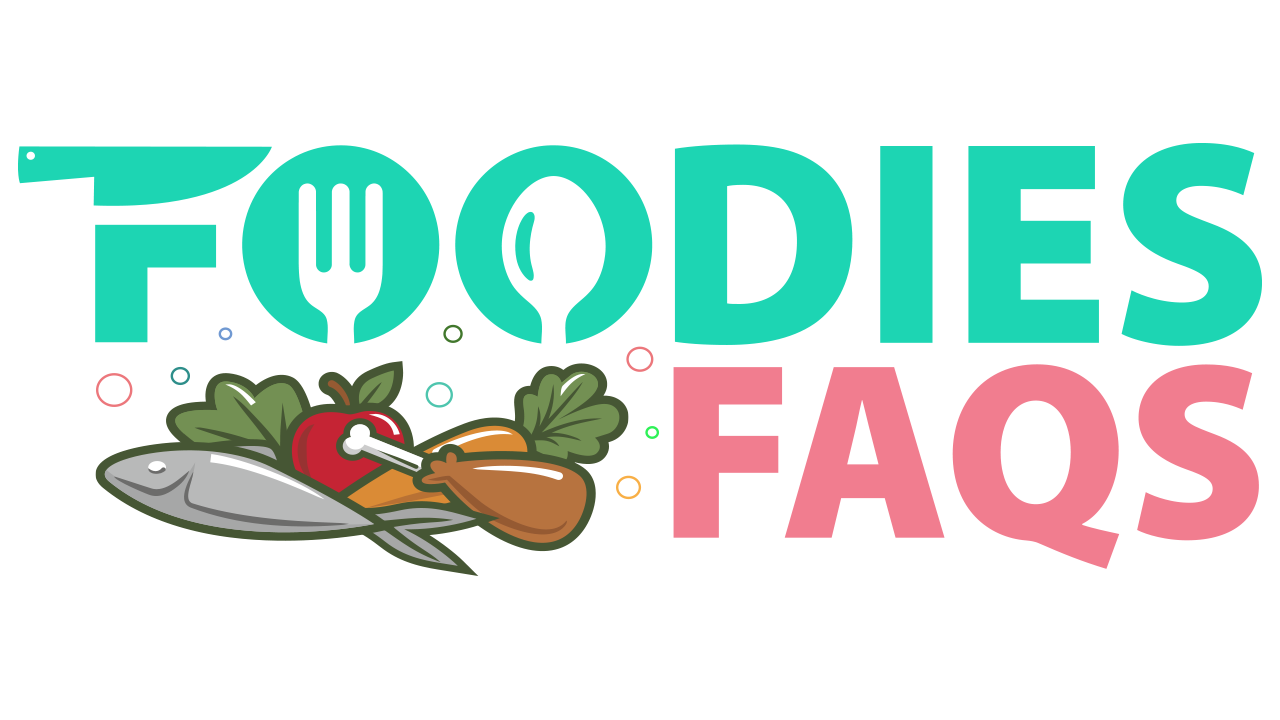Often, it is hard for me to resist eating grainy foods like rice in my diet. After searching in different markets and online sites, finally, I have found low carb, high nutrition grain called millet.
Millet is a healthy alternative to rice that helps in not only maintaining weight but also keeping a healthy body. But does this cereal grain fit onto the ketosis diet?
So, if you want to find is millet keto friendly? I have gathered all the information and alternatives that will help you to balance your keto diet with low-carb grainy foods.
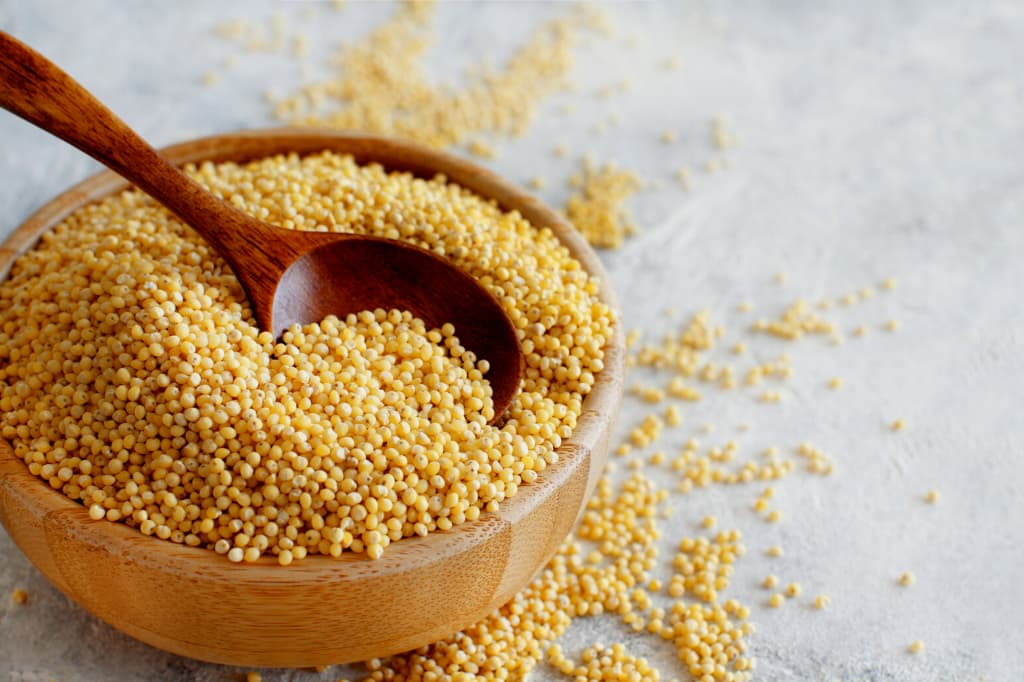
Table of Contents
About Millet
Millet is known as different cereal grains of the same grass family called Poaceae. They are gluten free and high protein grain that is very healthy for your body.
This cereal grain looks like birdseed or a tiny corn kernel that is yellow. Millet does not have any taste, but it can adapt to other flavors. It tastes like corn or nut but is a bit sweeter than other grains when cooked.
Millets are a vital part of a well-balanced diet due to their high fiber and other essential minerals. These essential minerals are good for your body and mind.
Moreover, it has fewer carbs than rice. So, you can eat millet instead of rice. You might even replace other grain items like wheat or bread with millet for a low-carb option.
Types Of Millet
You can find two types of millets in markets. One is major millets, and the other is minor millets. These varieties of millets are determined by popularity.
The major millets are the most commonly cultivated varieties. They are pearl, foxtail, proso, and finger or ragi. These millets are widely found in markets and even online grain shops.
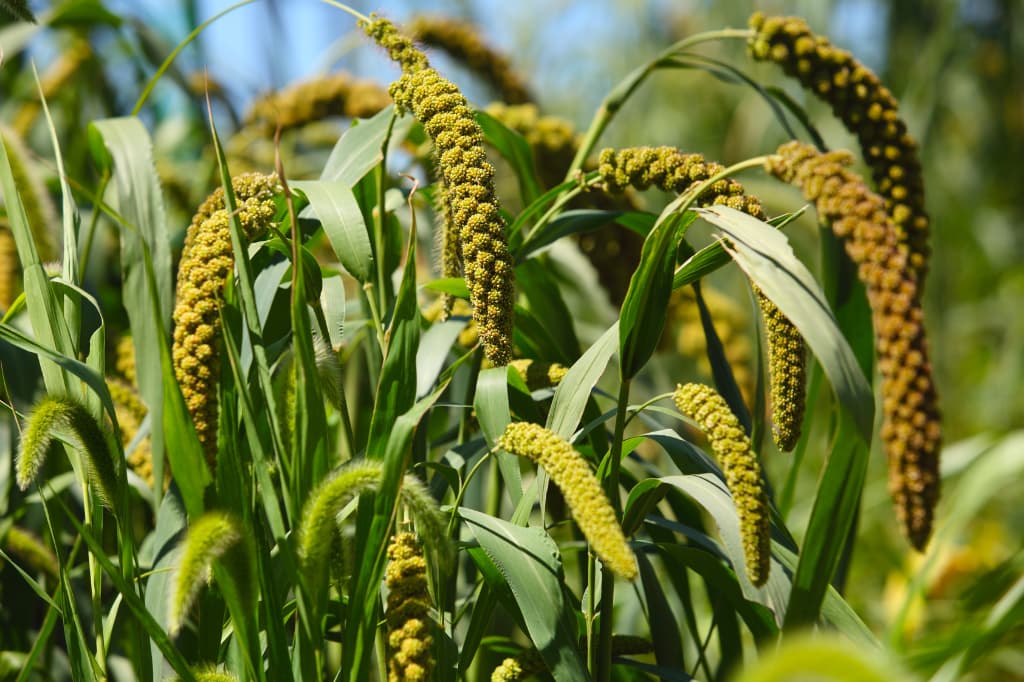
On the other hand, minor millets include Kodo, barnyard, little, guinea, browntop, fonio, and adley. These varieties are not cultivated as much as the major, but they still have similar nutrients.
Health Benefits Of Millet
Millets have many positive impacts on your body.
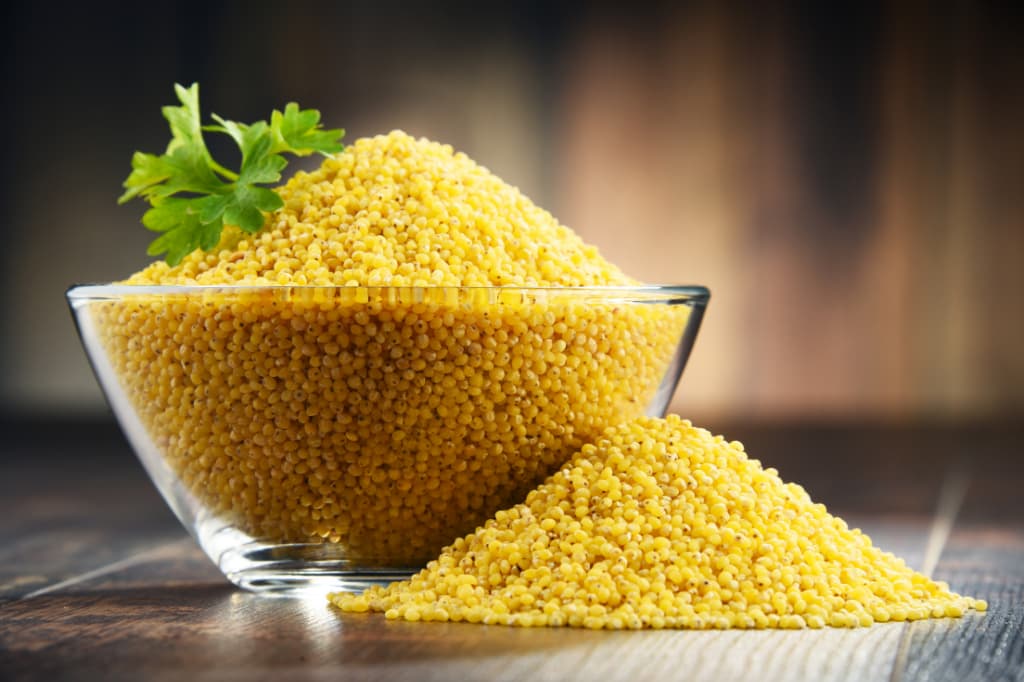
Helps Digestive System
Millet has fiber and prebiotics that helps in both the digestive and immune system. Adding millet to your diet will help you to lose body fat in the most natural way.
Moreover, people with celiac disease can eat this grain because it is gluten-free and high in protein. It also eliminates problems like gas, constipation, cramping, and bloating.
Controls Diabetics
Due to its low glycemic index, millet positively affects people with diabetes. Other than that, it also has a positive impact on both types of diabetes patients.
Furthermore, consuming millet has a different effect on people. It increases insulin sensitivity for those who do not have diabetes and controls sugar levels for people with high sugar levels.
Protects Heart Health
Millets are rich in potassium, which reduces blood pressure. It also prevents palatal blood clamping that minimizes the risk of heart attack, sunstroke, and other coronary artery disorders.
Moreover, the high fiber in millets helps you maintain your cholesterol levels. It also helps to reduce bad cholesterol and increase good cholesterol in your body.
Rich In Antioxidants
Millet is a rich source of phenolic compounds and antioxidants that slow down the aging process. Phenolic compounds like catechins and ferulic acid protect your body from harmful oxidative stress.
Moreover, other antioxidants like curcumin and quercetin help your body get rid of foreign agents and toxins that are bad for your health.
Helps In Weight Loss
Millets are a very healthy source of grain that manages obesity and helps lose weight. It has an amino acid called tryptophan that can lower appetite and eventually cause loss of weight.
Millet also can satiate the hunger that will prevent you from overeating. Also, it digests slowly hence will make you feel full for a long time. You can have millet for a well-balanced diet.
Relieves Menstrual Cramps
If women are suffering from unbearable pain and cramps during their periods, they should eat millet, because it is a good source of reducing pain. It has a high magnesium level that helps relax uterine muscles and relieve menstrual cramps.
Good For Skin
Millets have L-proline and L-lysine amino acids that improve skin elasticity. Moreover, consuming millets increases collagen levels which get rid of wrinkles and fine lines.
Other than that, millets help in reducing stress. It contains tryptophan that increases the serotonin levels in your body that will help you get a peaceful sleep at night.
Nutritional Information Of Millet
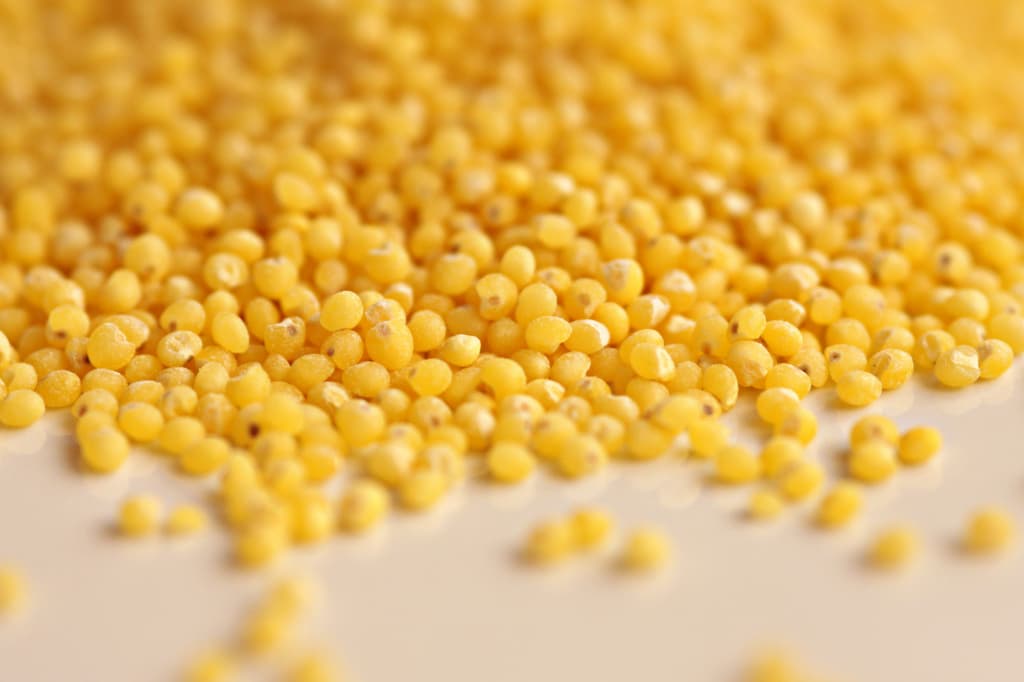
Before deciding is millet keto friendly? you have to know about the nutritional elements in this ancient crop. So, I collected the information on one cup (174 grams) of cooked millet.
This one-cup millet contains:
- 207 calories
- 41.2 grams of carbohydrates
- 2.3 grams of fiber
- 6 grams of protein
- 1.7 grams of fat
- 3 milligrams of sodium
- 5 milligrams of calcium
- 1.1 milligrams of iron
- 108 milligrams of potassium
It is a good source of thiamine, niacin, and riboflavin, as well as various phytochemicals with antioxidant activity.
So, one cup (174 grams) of cooked millet contains 39.9 grams of net carbs.
Keto Diet Requirements
A ketogenic diet requires limiting the consumption of carbs to get your body into a metabolic state. Instead of carbs, you will lose weight by burning your body fat with energy. It also keeps your blood sugar and insulin level in check.

The Keto diet is a low-carb, high fats diet. The carb ratio must be 20-50 grams per day with 70% fat, 20-25% protein, and 5-10% carbs. It is all about the numbers.
Sugars and artificial sweeteners are off-limits. Similarly, whole-grain items like rice, bread, pasta, and oatmeal should be avoided in this diet.
Fitting Millet Into The Keto Diet
Now that we have all the information about the millet and keto diet, the question remains, Is millet keto friendly?
The answer would be a big no. Millet does not fit into the keto diet because it has high carbs. Consuming a small amount of millet can kick you out of the keto diet.
We know that grains are the enemy of the keto diet because they have the most carbohydrates than any other food. So, to follow the keto diet, you need to avoid any food made of grain like bread, wheat, rice, etc.

Therefore, millet, a cereal grain, cannot be considered keto-friendly food. Per 100 grams serving of millet has over 22.37 grams of net carbs, which exceeds the requirements of a keto diet.
Even if you eat a small amount of millet, it will halt the ketosis state of your body. We already are aware of the fact that the keto diet burns fat for energy instead of carbs.
Furthermore, our body will start burning the carbohydrate from millet for energy. And the fats from the food will be stored in your body, which will affect your ketosis state.
So, millet is not suitable for any keto diet. However, it is a good source of nutrients that helps lose weight. So, you can consume millet for a low-carb diet or gluten-free diet.
Keto Alternatives Of Millet
As you cannot add millet to your keto diet plan, here are some alternatives to millet that you can enjoy.
Popcorn

Popcorns are the perfect keto-friendly snacks that you can eat in your diet. One cup of popcorn contains only 5.2 grams of net carbs. You can eat this whole-grain snack to fulfill your cravings.
However, you cannot eat more than one cup of popcorn a day. If you eat more, you will get kicked out of your ketosis state.
Cauliflower Rice

Cauliflower rice is a good keto alternative to millet. It contains only 5 grams of carbohydrate, which is much lower than millet’s 22 grams. Because of its high fiber, cauliflower provides good digestive health.
It is also easy to make cauliflower rice. Grate some cauliflower, and then cook them in olive oil, sea salt, and black pepper. And your yummy cauliflower rice is ready.
Broccoli
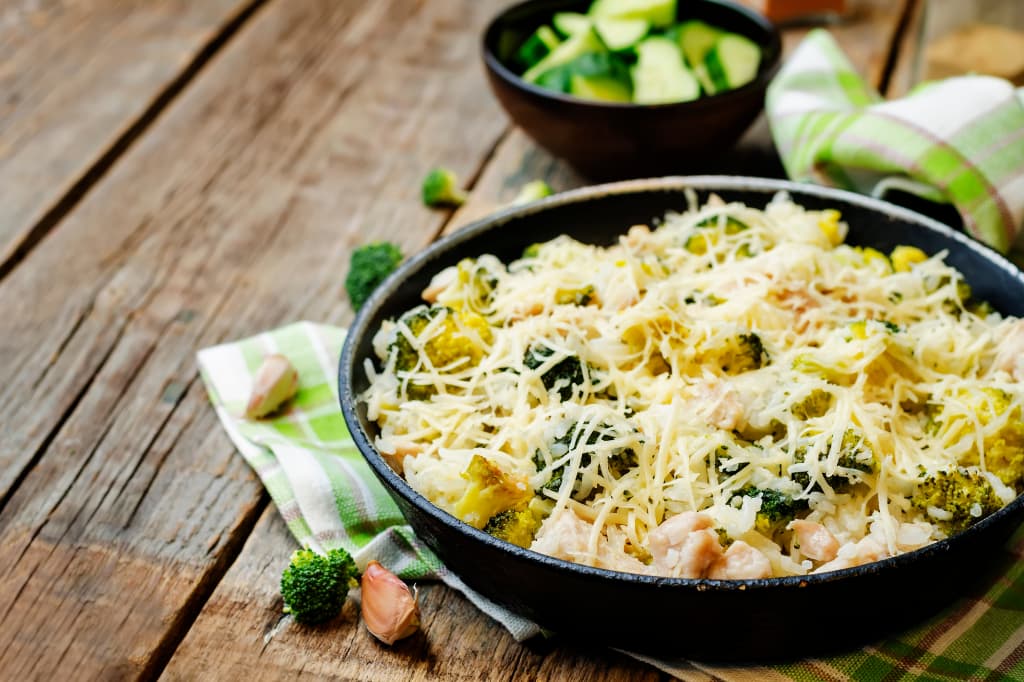
You can also make rice with broccoli in the same way as cauliflower. It only has 4.3 grams of net carbs, which is perfect for your keto diet.
You can also add some chicken or shrimp to your broccoli rice. It will add some extra flavor to your meal. It will give you the same taste as millet pilaf.
Cabbage
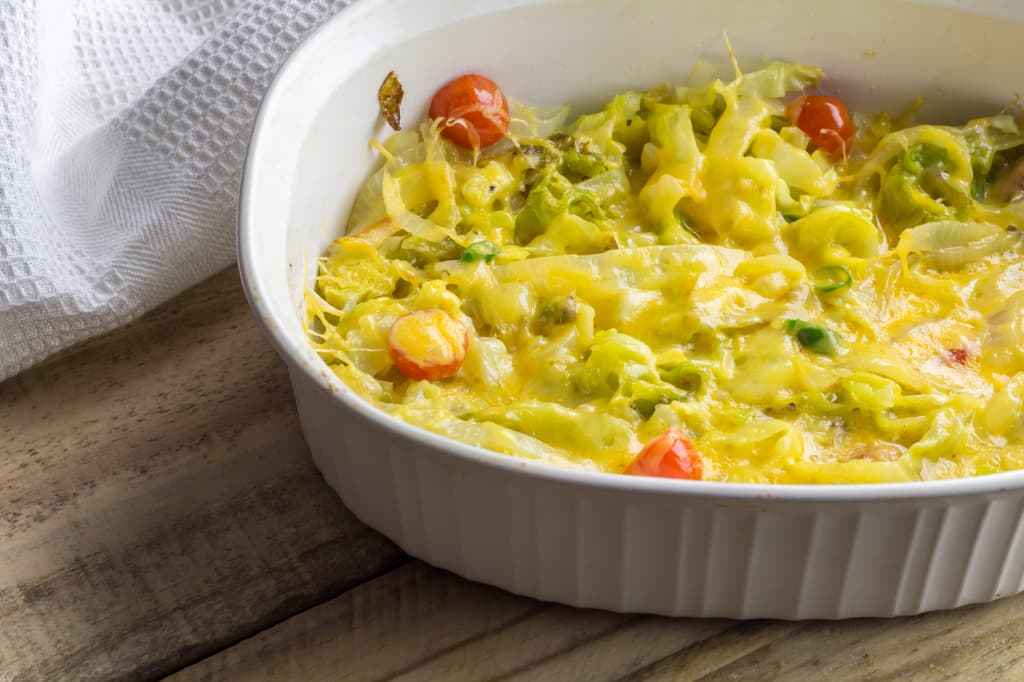
Now that you know about plant-based grain alternatives, you can add cabbage to different dishes like millet. Moreover, cabbages have a low carb count and more nutrients than millets.
You can make rice, casserole, and even pasta with cabbage to make your diet more flavorful and nutritious.
Zucchini Noodles

Zucchini is the highest on the list of keto-friendly vegetables. It perfectly fits the keto diet with its low carb and high nutrients intake.
Therefore, you can make zucchini noodles with parmesan cheese and butter with a pinch of salt and pepper. One serving (serving weight- 113 grams) of zucchini noodles has only 3 grams of net carbs, so it will not hamper your diet.
Frequently Asked Questions
1. Can you eat millet on a low-carb diet?
Millet is great for a healthy low-carb diet. It is relatively common in carbs and high in fiber. You can eat millet to maintain your health and weight.
2. Are millets better than rice?
You can replace rice with millets to keep your weight in check. Millet is a healthier version of rice. It has more fiber and protein and is packed with more vitamins and minerals than rice.
3. Can you cook millet in a rice cooker?
Yes. You can cook millet in a rice cooker. Add water or broth and millet to the rice cooker. Turn it on and click the ‘white rice’ button. Please wait for 20 minutes to cook and allow it to rest for 10 minutes before eating.
4. Is millet the same as rice?
No. Although millet can replace rice in diet, it is not the same as rice. Rice is a cereal plant that comes from the grass family, and its seeds are used for food. On the other hand, millet is compounded by several kinds of cereal that produce small grains.
5. Is millet flour OK on the keto diet?
No. Millet flour has too many carbs. So, it should be avoided in the keto diet. This diet requires a strict restriction of carb intake between 20-50 grams per day.
And millet flour has 73 grams of net carbs per 100 grams serving. So, millet flour is not OK on the keto diet.
6. What happens if we eat millets daily?
If we eat millets daily, it can lead to diverse effects like delayed digestion. Millets have high fibers that cause slow digestibility. So, we need to eat millets moderately without excessive consumption.
7. Is millet healthier than oatmeal?
Both millet and oatmeal are healthy and have different functions when it comes to your body. Oats are good for cholesterol, and millets are good for diabetes. So, you can alternate between oats and millet in your diet plan.
8. Which millet is the healthiest?
Millets such as ragi, pearl, barnyard, proso, and Kodo are the healthiest. They are full of fiber, antioxidants, vitamins, and minerals that keep your body healthy.
Final Thoughts
Finally, we have explored its and bits of the question “Is millet keto friendly?” and found the answer that millet is not keto-friendly. Although it has high fiber and essential elements needed for a low-carb diet, it exceeds the carbohydrate count of the keto diet.
Therefore you can replace millet with other low-carb food like cauliflower, popcorn, and zucchini. I hope this article helps you create your diet plan and maintain a healthy and well-balanced keto diet.
